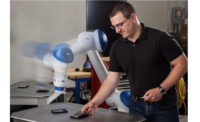7 Challenges for Packaging Production (and What They Mean for Printers and Converters)

The printing and converting industry for packaging production across labels, flexible packaging, folding carton and corrugated boards is undergoing a massive transformation. It is important for all converters to understand the main challenges ahead and to be prepared. We recommend proactively addressing the 7 topics below:
1. The Packaging Roles: Protect, Deliver, Appeal
The role of packaging has been evolving over the years. While protecting the goods is still the number one priority, it needs to be done in a sustainable way often using thinner materials and more sophisticated design. With the rapid development of new retail formats (particularly e-Commerce), the delivery mechanism of boxes is becoming more complex, and the packaging production needs to be done differently and faster with more productive and flexible machines while delivering the highest quality. Brand owners use packaging to stand out on the shelf and to appeal to customers. The recent trend requires shorter production runs, repeat orders and flexibility, which is putting more pressure on converters to adjust their packaging production line capabilities. This leads nicely onto the second major topic.
2. Conventional and Digital
For decades, the printing and converting of packaging has used conventional methods. But new digital solutions are now enabling significant progress, meaning brand owners and converters can do things that were not previously possible. Digital will not completely replace analogue, but will provide the flexibility required for shorter production runs driven by new trends such as customization, security and traceability needs. While there is little doubt that digital will positively contribute to packaging production, it will require more than a digital press to deliver effective packaging production. Which brings us onto the third challenge.
3. The Digitalization of the Workflow
One of the biggest challenges is the management of various interfaces between different equipment and the brand owner, the agency, the printers and converters. Automation will help to fully optimize the machines’ up-time and enable effective communication between the one ordering the boxes, the one producing them and all the others in the middle. While printers and converters spend a lot of energy to select the most productive machines, they sometimes underestimate the complexity of the entire workflow.
4. Cost Pressure
We live in a world where we all want more for the same – or even better, for less. Brand owners, who are the ultimate decision-makers on the packaging, want better, faster, more customized and better secured, but they do not want to spend more. The truth for packaging production is that the cost of a given box should not be higher than it is today. The overall packaging production costs are impacted by three major elements: quality, productivity and costs. These three factors are all very important and they should not be seen in isolation but across the entire chain from designing to printing to converting and to packing. We are all familiar with the concept of a chain being as strong as its weakest component. This is the same for packaging production, especially in an integrated workflow.
5. Sustainability
This is a topic we all need to take into consideration. Packaging production will need to process more advanced substrates, thinner materials and more demanding designs – all with the same productivity, more flexibility and definitely at the same cost. Ideal waste management means zero-fault packaging. The ability to manage repeat orders and legal regulation changes will also be high on the requirements list. And with sustainability, we always need to keep one eye on the future: Do not only look at what you print today but what will be printed tomorrow.
6. Workforce Education and Staffing
Hiring in this industry can be challenging – talented individuals who fully understand the industry requirements are rare, and the industry is sometimes perceived as less attractive than others. The move to new digital solutions across the production chain will make packaging production more attractive. Training of existing staff members need to be integrated in workforce planning.
7. Services
This is not about the break and fix of a given machine, but rather the daily relationship needed with suppliers – indeed, they should be partners, rather than suppliers. With the advent of the Internet of things, more and more equipment is connected directly with the manufacturers, and preventive maintenance is no longer science fiction.
Bobst
Looking for a reprint of this article?
From high-res PDFs to custom plaques, order your copy today!





